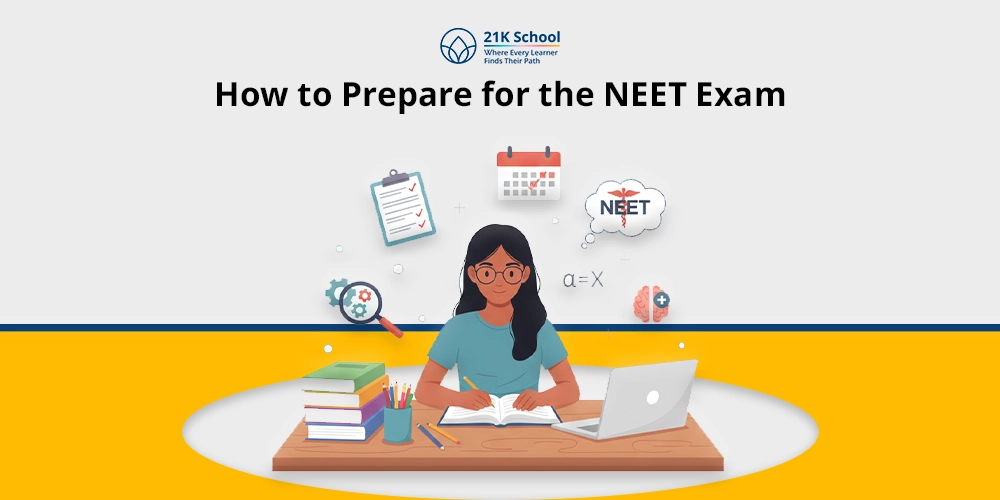
In this reshaping world understanding technology, virtual robots and virtual robotic education is a must learn terms.
Virtual robots are artificial intelligence, robots that operate and develop their abilities within digital or simulated environments.
With time, the 21st century has gained lots of information. Each is useful to innovate new ideas. By understanding the basics of virtual robots one can achieve more.
Students can now develop and test new upcoming technologies. With the help of programming concepts one can master the field of virtual robotics.
Here we will understand and explore the needful point of virtual robots, its key features, types and importance learned in this changing era.
Let’s begin!
Contents
- What are Virtual Robots?
- Key Features and Functionalities of Virtual Robots
- Types of Virtual Robots
- The Need of Virtual Robots in Today’s Education
- Technological Foundations of Virtual Robots
- Key Steps to Build Virtual Robots
- Challenges and Considerations of Virtual Robots
- Understanding the Benefits of Virtual Robotics
- Navigating The Future of Virtual Robots
- Examples of Virtual Robotics Platforms
- Concluding Thoughts: Build The New Era with Virtual Robots
What are Virtual Robots?
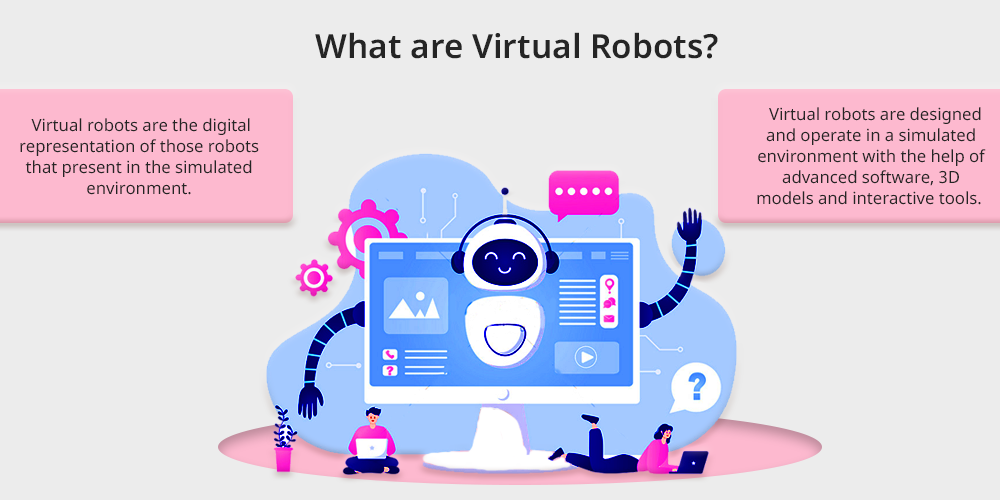
Virtual robots are software-driven entities that function and interact within a simulated digital environment.
But have you gone through what virtual robots really are? In simple terms:
Virtual robots are the digital representation of those robots that present in the simulated environment rather than the real world, quite interesting isn’t it?
These virtual robots are designed and operate in a simulated environment with the help of advanced software, 3D models and interactive tools.
To know more about virtual robots let’s know about its features and functionality and other information.
Key Features and Functionalities of Virtual Robots
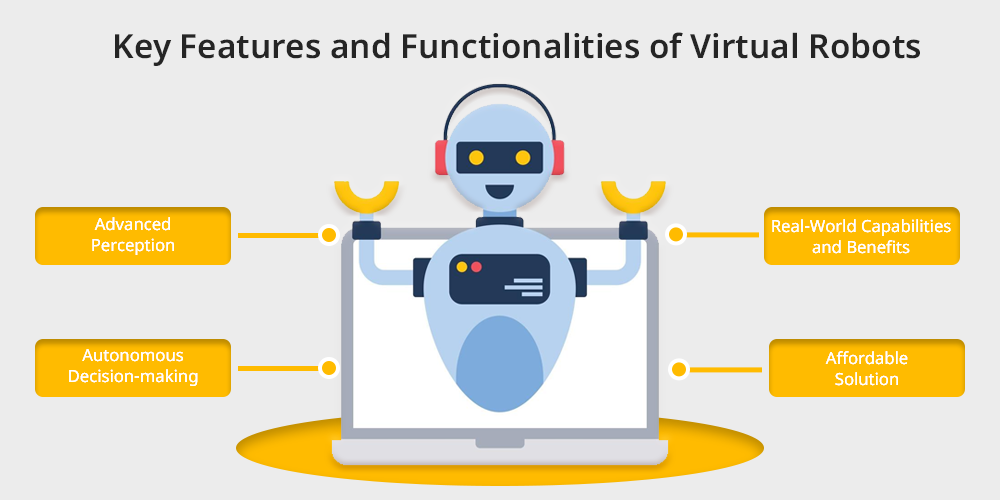
Virtual Robots are created to copy the real robots working and functions. From its data management, to interacting with users online, and providing virtual assistance.
And all these can be done without any high budget or robot kit which is best for students. Also, who are new to this.
Some key functions of virtual robots are:
- Advanced Perception: These machine learning models help robots to perceive and understand their environment. This is done by devices like sensors and cameras.
- Autonomous Decision-making: Virtual robots behave intelligently and detect objects or make right decisions if required. These AI algorithms have the ability to perform complex tasks with precision and efficiency.
- Real-World Capabilities and Benefits: Virtual robots are capable to automate routine tasks, increased efficiency and productivity, with safety.
- Affordable Solution: It is one of the most affordable options which doesn’t need to buy hardware.
Types of Virtual Robots
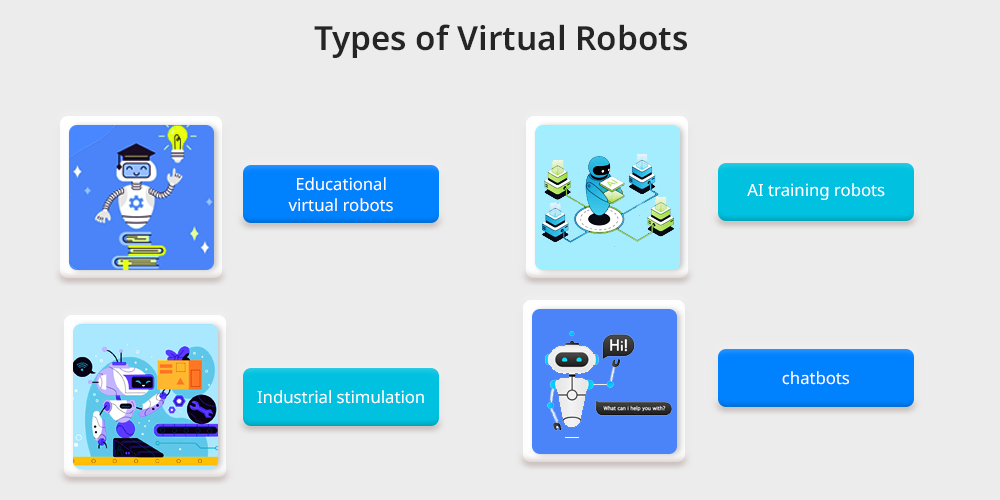
There are various kinds of virtual robots. Each one is designed to lose a specific kind of work or stimulation in mind. Some common kinds you may need to know are:
- Educational virtual robots which are used to learn programming languages and basics to advance level studies in the classroom.
- Industrial stimulation is also popular to stimulate automation and factory robotics for further planning and training.
- Some AI training robots are also used to navigate, identify and make decisions in particular situations.
- Different kinds of virtual assistants are also popular such as chatbots which help in updating and finding solutions of day-to-day operations.
Also Read: 3 Things Kids Can Learn From a Robotics Program
The Need of Virtual Robots in Today’s Education
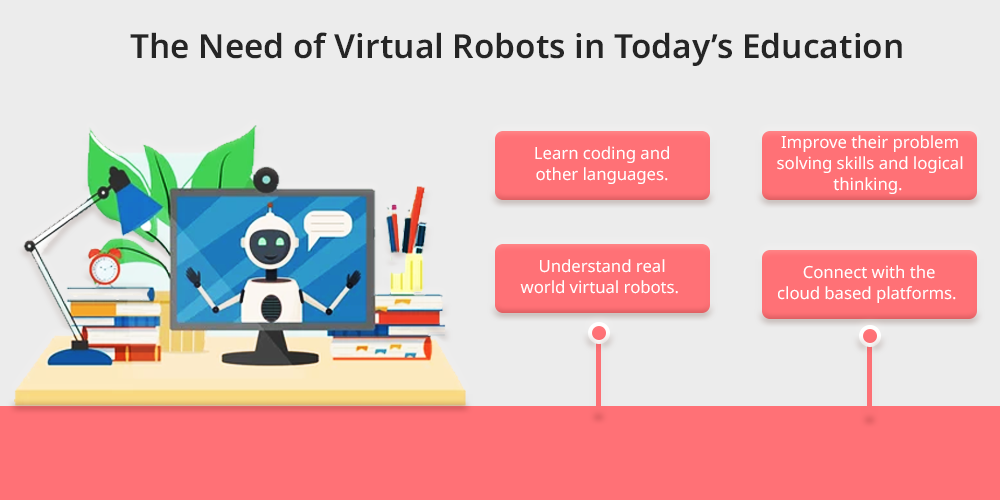
With time technology and education is updating from time to time. And adaptation is important for everyone.
Learning the new changes not only educates students for the future. But also helps in creating a new era. These kinds of education make learning scenarios more diversified, such as providing personalized guidance and feedback.
Both STEM (Science, Technology, Engineering, and Mathematics), and robotics walk hand in hand and it’s a beginning of something better, interactive and innovative.
Technology is like virtual reality (VR) artificial intelligence (AI) machine learning (ML) and Augmented reality (AR) is our core of virtual robots. When it comes to popular technologies, the benefits of artificial intelligence in education are immense.
But by learning these concepts students can build advanced virtual robots.
This allows students to shine brighter in the field of virtual robots. This allows students to:
- Learn coding and other languages.
- Improve their problem solving skills and logical thinking.
- Understand real world virtual robots.
- Connect with the cloud based platforms.
Technological Foundations of Virtual Robots
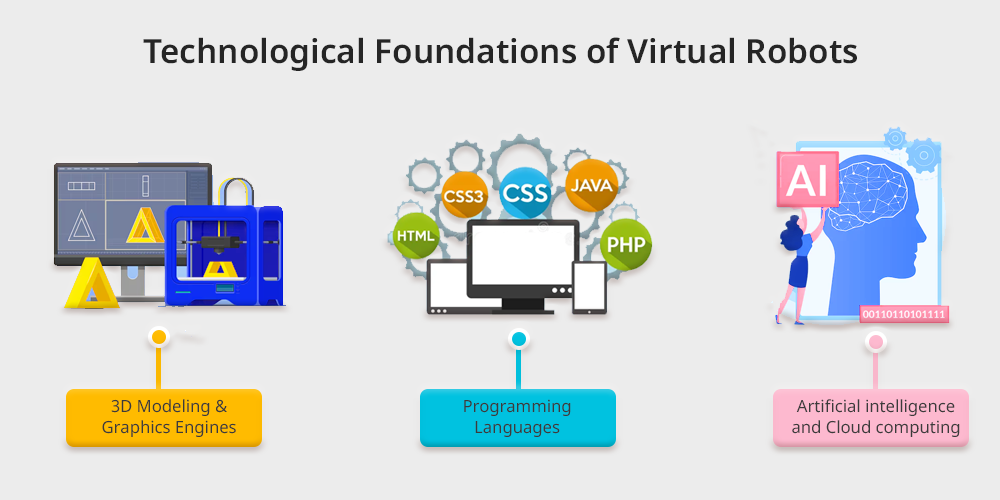
To work properly virtual robots rely on technological foundations. For example:
- 3D Modeling & Graphics Engines such as Unity, Blender, or WebGL.
- Different Programming Languages like Python and JavaScript are used. Read more on programming languages for kids here.
- Stimulation Engines for realistic look.
- Artificial intelligence and Cloud computing for enhancement.
These technologies work together to create virtual robots in the real world.
Key Steps to Build Virtual Robots
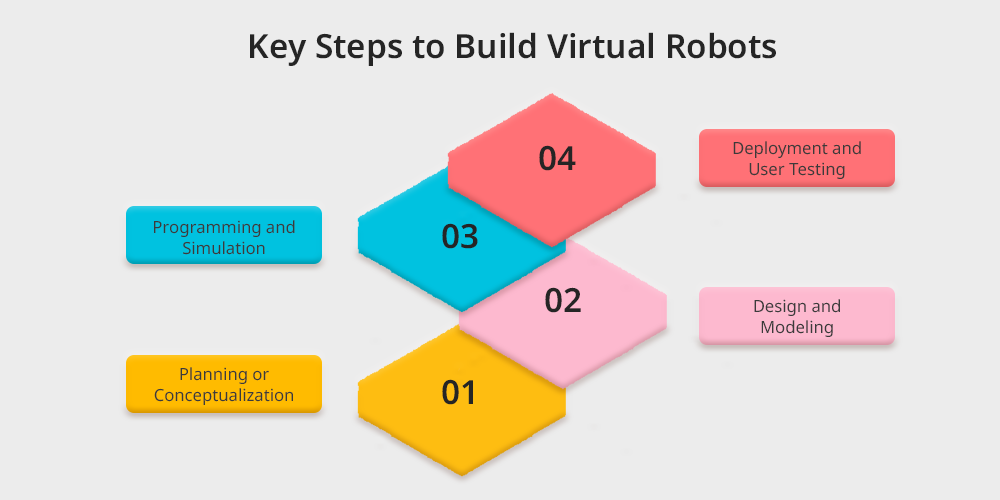
Creating virtual robots is not just attractive graphic designing; it’s all about using the technology in the proper manner.
This will give a desired result in the end to make things better. Here’s what you need to do:
- Step 1: Planning or Conceptualization
Start with conceptualization which means understanding the need of making a virtual robot. Look you want is for learning, automation or training.
Once you know the purpose, define what task should be performed by robot and in which environment.
- Step 2: Design and Modeling
The next step is to design the virtual robot body according to the purpose. It is an essential step for both creators and viewers.
Here you can use various tools like 3D design tools to add sensors, wheels, limbs, or even expressive faces.
- Step 3: Programming and Simulation
In this stage the real magic happens. Create can write a code to control the virtual robot behavior.
In the initial stage individuals use block-based languages and advanced users use text-based programming. The trainers can teach programming to kids by assigning the task according to their niche.
- Step 4: Deployment and User Testing
After the bot is up and running it’s time to test in real situations. By getting feedback from users one can refine the functions accordingly.
For performance and improvement this process is crucial because the end result should be satisfactory for all.
Challenges and Considerations of Virtual Robots
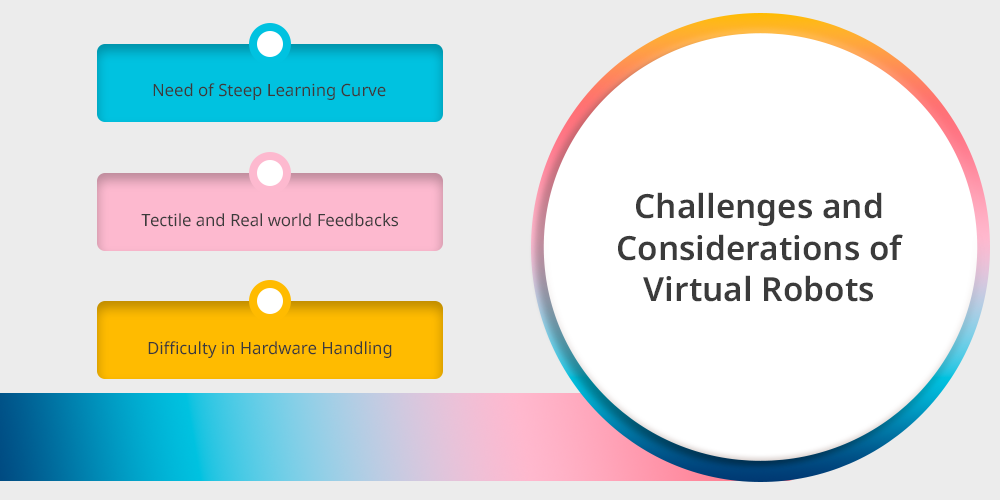
Good things always come with challenges. And creating virtual robots is not an easy task. Some real challenges you may face are:
1. Need of Steep Learning Curve
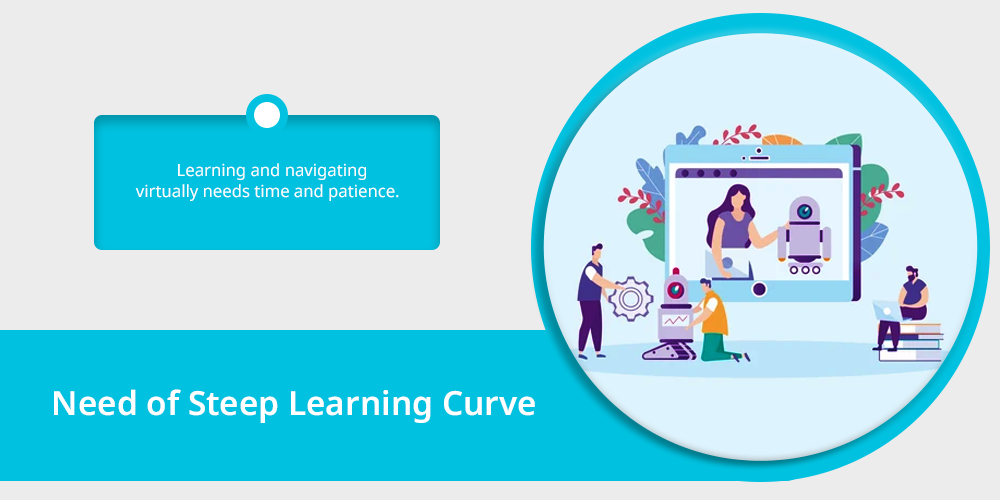
Some platforms need a steep learning curve in the starting time. Learning and navigating virtually needs time and patience.
2. Tectile and Real world Feedbacks
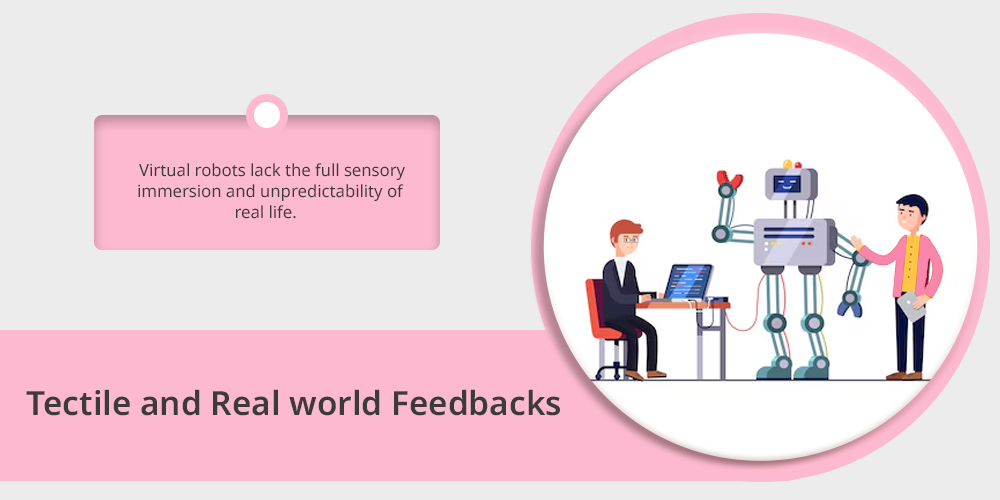
Tectile and real world responses got missed. Virtual robots lack the full sensory immersion and unpredictability of real life.
3. Difficulty in Hardware Handling
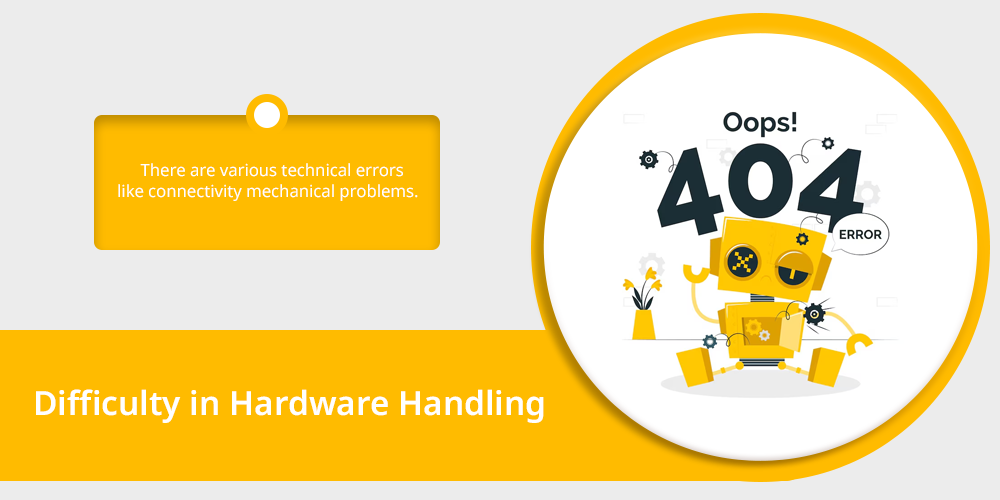
Sometimes students have difficulties handling hardware, especially in the beginning. There are various technical errors like connectivity mechanical problems.
Remember, these challenges can be handled and balanced. With effective planning like hybrid approach, support systems and scaffolded learning.
Understanding the Benefits of Virtual Robotics
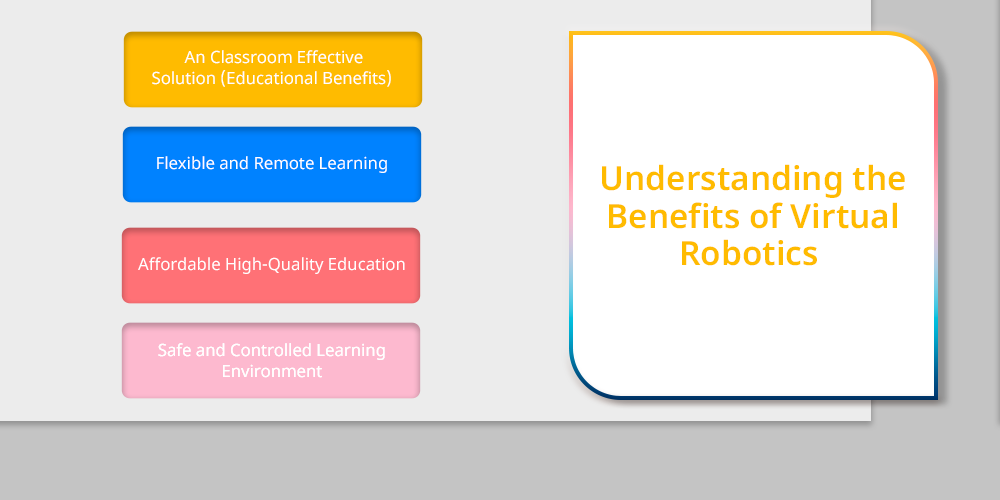
Before proceeding to the future of virtual robots it’s important to understand how it is beneficial to learn about virtual robots.
It helps students to practice programming language and testing without spending hefty amounts or physical touch.
1. An Classroom Effective Solution (Educational Benefits)
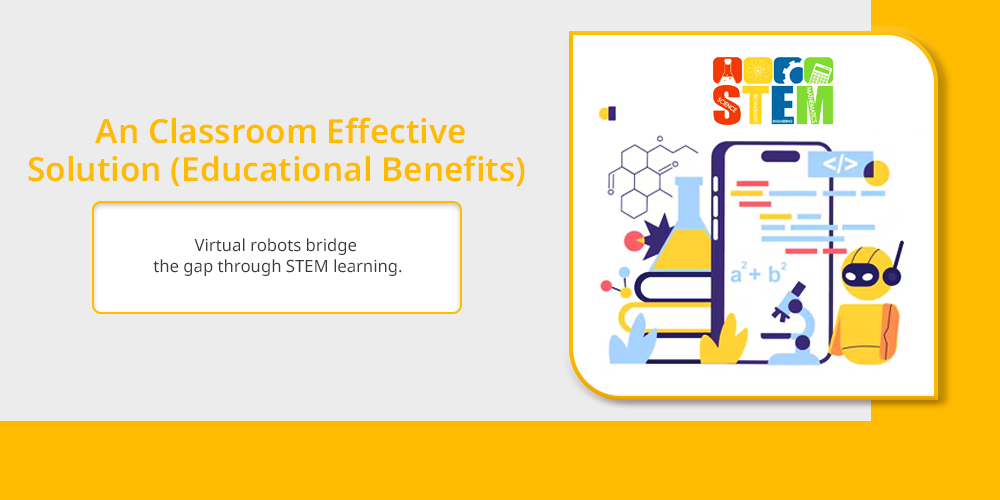
Many students are unable to educate themselves due to lack of resources. However virtual robots bridge the gap through STEM learning.
2. Flexible and Remote Learning
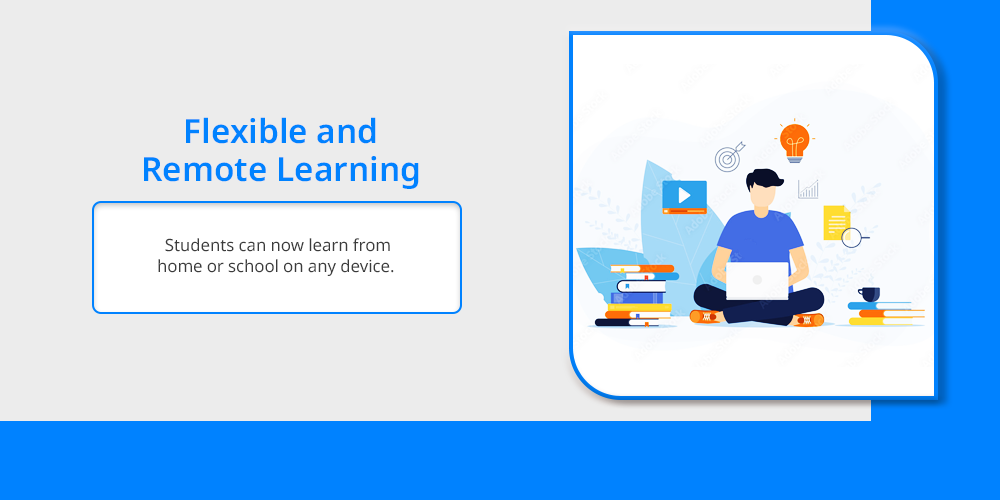
It is one of the biggest and most powerful options in learning. Students can now learn from home or school on any device.
3. Affordable High-Quality Education
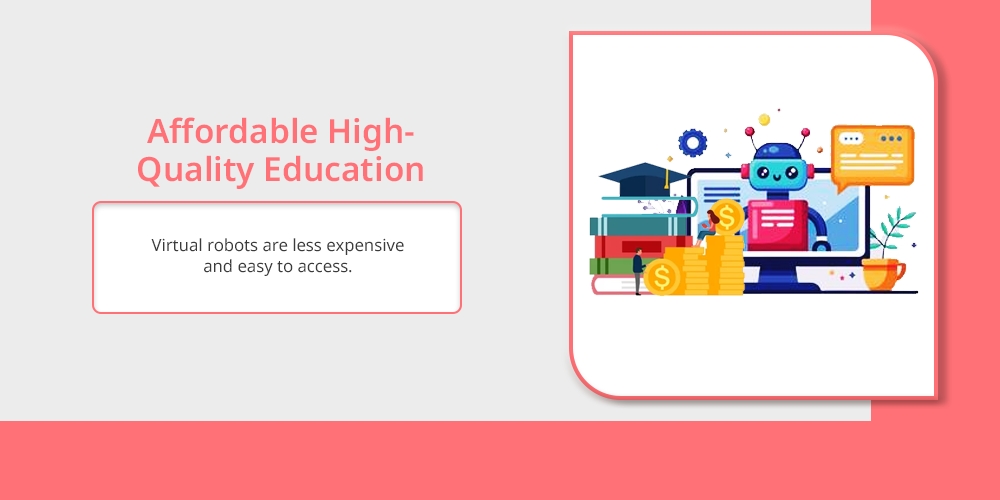
Virtual robots are less expensive and easy to access. That’s why in the 21st century high quality education becomes affordable.
4. Safe and Controlled Learning Environment
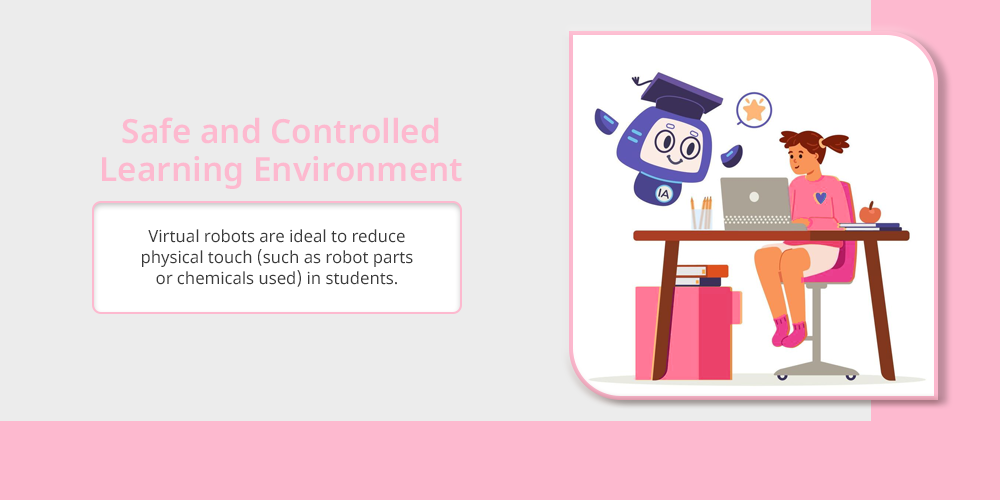
Virtual robots are ideal to reduce physical touch (such as robot parts or chemicals used) in students. Provide a safe learning environment.
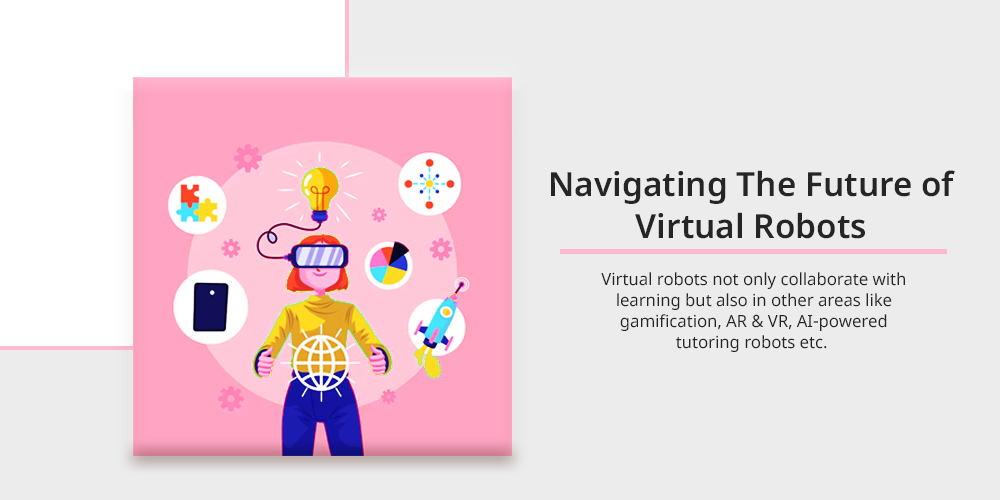
While looking ahead it seems like virtual robots and robotics have exciting opportunities. It becomes more intelligent and interactive with time.
This shifts the way of looking at the world where machines interact naturally, perform complex tasks autonomously, and seamlessly connect with humans for betterment of society.
Virtual robots not only collaborate with learning but also in other areas like gamification, AR & VR, AI-powered tutoring robots etc.
Rather than replacing workers, this shift creates new opportunities for skilled jobs and upskilling in emerging tech fields. It’s time to evolve with technology and prepare a new environment in modern classrooms.
Examples of Virtual Robotics Platforms
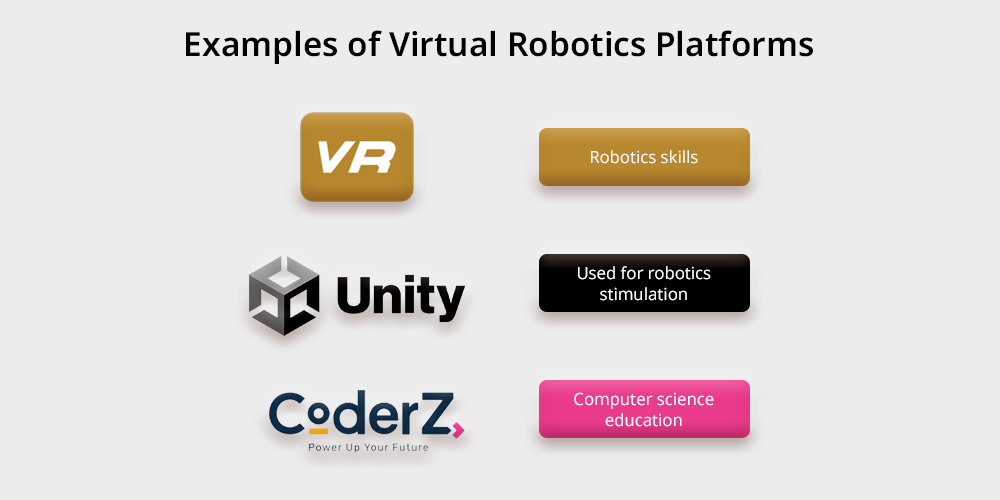
Here’s you can look at some of the most common you should know:
- VEXcode VR: It helps students to learn more about robotics skills.
- Unity: It is a game engine used for robotics stimulation.
- CoderZ: It is specially used for computer science education.
There are many more examples of different industries which are existing, educational and for beginners.
Concluding Thoughts: Build The New Era with Virtual Robots
As technology evolves we would like to learn new things. Things like designing, learning and testing virtual robots to lead the next generation.
We are at that point where today’s learners and tomorrow’s leaders. That’s why including virtual robots and robotics in education is a must.
Whether you are a student, parents or teachers, giving time to embrace virtual robots helps in shaping the future in a better way.
Embrace the career with 21k school and digital transformation and become creative. Because it’s time for a new virtual era.


